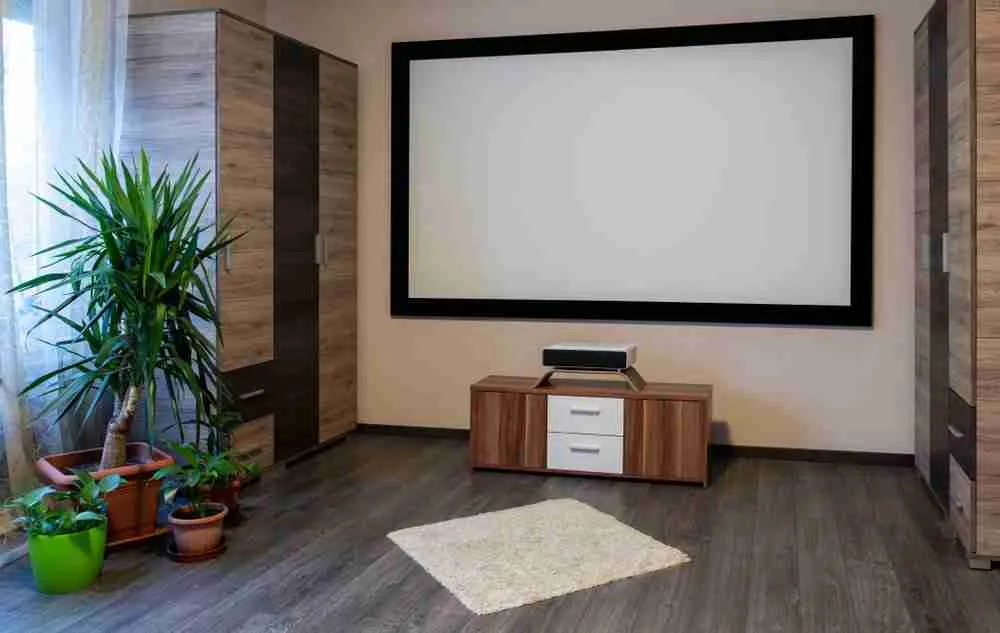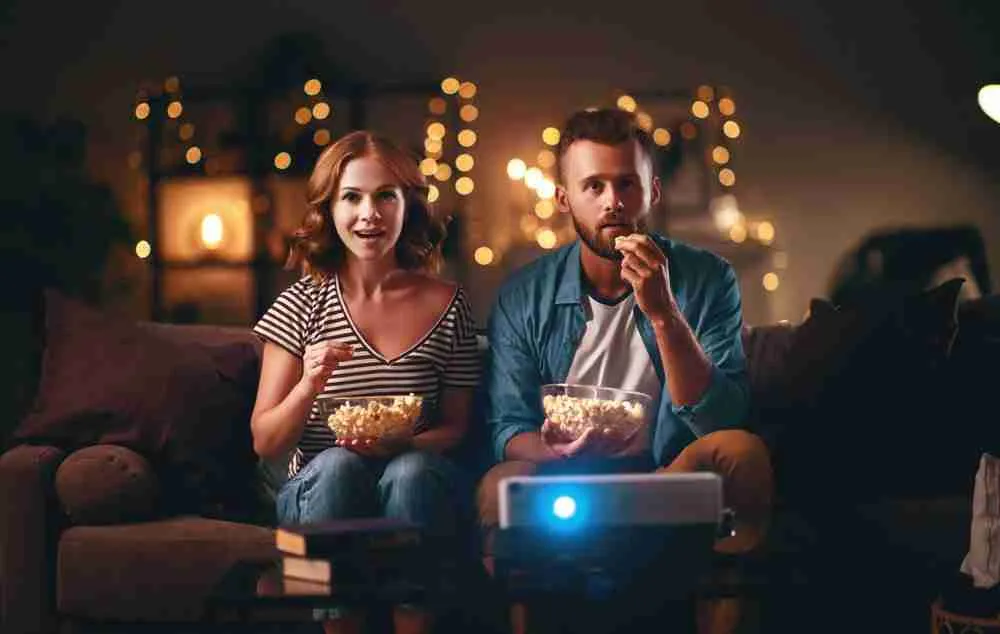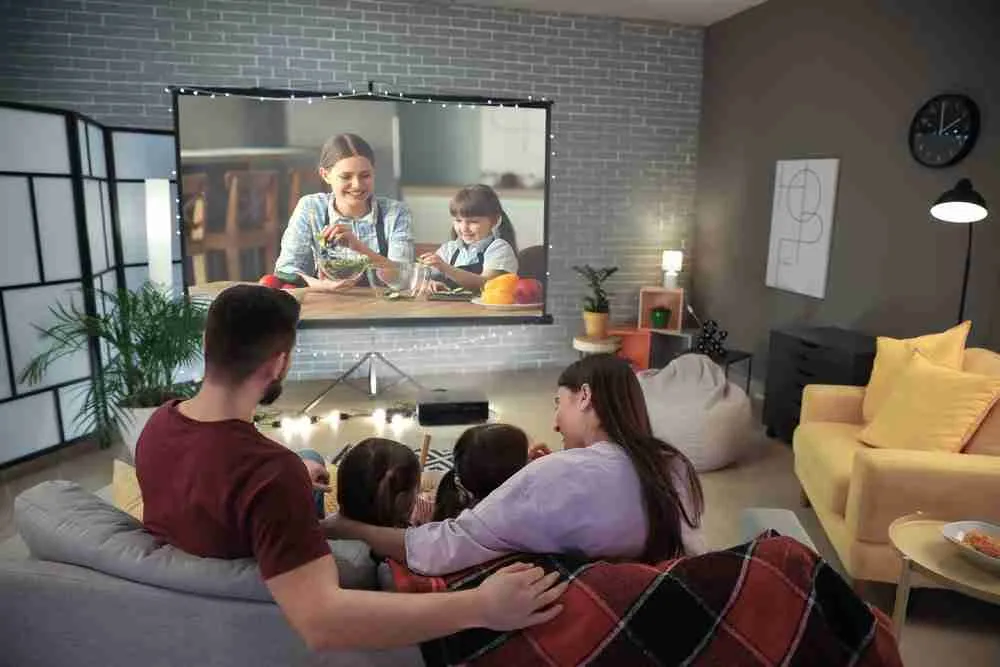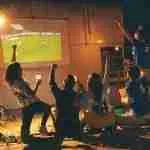An ultra short throw projector screen has an extremely wide-angle lens with a throw distance ratio of less than 0.4. This type of projector is perfect for small areas like your living room or backyard because you can place it close to the screen.
One of the most significant advantages of UST projection is that anyone using it won’t have to stand in the projected light beam, casting shadows on the image. Another benefit is that it is simple to set up and eliminates the cost and difficulty of using a ceiling mount.
If you have a UST projector, you can use it on any surface. However, the image quality will be poor, and you won’t enjoy the viewing experience. A specially built ultra-short throw projection screen is required if you want to enjoy authentic 4K UHD content in your home theater.
It may be challenging to find an ultra-short-throw projector screen that suits your needs. This article will guide you on what to look out for, which would make the process easier for you.
Choosing an ultra short throw projector screen
Imagine choosing the wrong projector screen for your home theater projector that cannot project ultra short throws. If you don’t use the right UST projector screen, the picture on the screen will be distorted. It also ruins the pleasure of watching a movie on a giant projection screen in-home cinema.
By the end of this article, you will be able to choose an ultra-short-throw projector screen that suits your needs.
Screen Size
The first thing to guide your choice is to determine the size of the UST screen you wish to project on. Screen size may be a matter of personal taste and how much wall space you have in your entertainment area.
Projectors usually have a size limit. This limit is generally lower with ultra-short throw projectors than with non-UST projectors. UST projectors typically have a maximum size of 150 inches, though this does not stop you from going bigger.
That said, pictures larger than the maximum suggested screen size are often more difficult to focus on or less bright.
A good trick to determine the size of the projector screen you need is to display pictures on the wall using your projector. This way, you can calculate the image’s diagonal size, which will help you decide what ultra-short throw projector screen you need.
Also, all UST projectors can work with a screen size between 80 – 120 inches.
Screen Gain
Gain is the measurement of a screen’s surface’s reflectivity. The projector screen reflects light from the projector back to the audience. The reflectivity of a screen is referred to as gain.
A higher gain means more light is reflected, whereas a lower gain suggests that the screen absorbs more light.
Because the screen reflects less ambient light, most UST projectors often use a lower gain. You may believe that a higher gain screen would be better for an ultra-short throw projector because more light equals a brighter image, but this is not the case.
A low gain screen reflects the projector at a diminished ratio, including the ambient light, allowing the ultra-short throw projector to perform better in a well-lit area like your backyard.
Another reason a low gain screen works well with a UST is it absorbs more light, which eliminates hot spots. Therefore, you should choose a UST projector with a low gain.
Ceiling Light Rejecting (CLR) Screen
An Ambient Light Rejecting (ALR) projector screen is the best feature for a UST since it removes light from sources other than the projector.
A CLR screen is a form of ALR screen that rejects ambient light. ALR screens block light from sources other than the projector using an angled reflective surface that reflects ambient light from higher angles while also reflecting projector light.
As a result, the picture is brighter compared to a non-ALR screen. A CLR screen, in particular, absorbs light from above while reflecting the projector’s beam to the people watching.
Because Ultra short throw projectors emit light from the bottom of the screen, a ceiling light rejecting (CLR) screen is the best projector screen to give you the desired result.
Installation Type
Take into account how you intend to mount your projector screen in your entertainment space. A fixed frame projector screen hangs on the wall and is a permanent fixture like a TV screen.
Drop-down displays are suspended from the ceiling, and you can hide them when not in use. This is a good choice for an outdoor cinema setup. A UST projector drop-down screen should still be formed of CLR material, tensioned, and available as an electric screen.
Finally, there are floor-rising displays that rise from the ground. A floor-rising projector screen, like drop-down displays, is ideal for a neat set up in your living room.
Pricing
When choosing a screen for your ultra-short throw projector, price is an important consideration.
You don’t want to spend all your budget on just the screen when you have other things to buy like the projector, external speaker, etc. However, you may expect to pay a premium price for an ultra short throw projector screen in most cases.
On the low end, screens cost roughly $300 to $500, while mid-range and high-end screens cost the same as a UST projector.
Conclusion
The tips discussed in this article will help you choose the best UST screen that suits your needs. Whether you need it for your home cinema setup or to organize a backyard movie night, UST projector screens are very easy to install.
If you invest in a quality UST projector screen, you can use it for decades. The viewing experience of the projection is dependent on the quality of your projector screen. Therefore, you must take your time to select the right projector screen.




